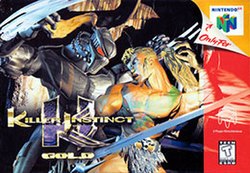The coins were sold for $1, and were vended at the anniversary celebrations in Lexington and in Concord; they were sold at banks across New England. Although just over half of the authorized mintage of 300,000 was struck, almost all of the coins that were minted were sold. Depending on condition, they are catalogued in the hundreds of dollars.

The Lexington-Concord Sesquicentennial half dollar, sometimes the Lexington-Concord half dollar or Patriot half dollar, was a commemorative coin struck by the United States Bureau of the Mint in 1925 in honor of the 150th anniversary of the Battles of Lexington and Concord. It was designed byChester Beach.
Members of the Massachusetts congressional delegation introduced legislation in 1924 which would provide for a commemorative half dollar for the anniversary. The bill passed both houses of Congress and was signed by President Calvin Coolidge. Beach had to satisfy committees from both Lexington and Concord, and theCommission of Fine Arts passed the design only reluctantly, feeling Beach had been given poor materials to work with.
The Secretary of State for the Colonies, Lord Dartmouth, instructed the British commander in Boston, General Thomas Gage, to stamp out this resistance. On April 18, 1775, Gage secretly ordered Lieutenant Colonel Francis Smith to go with 700 men to Concord and destroy the munitions there.[1][2] It is uncertain how the Americans came to hear of the plan: Gage's wife Margaret was born in New Jersey and may have been a spy.[3] Another local leader, Joseph Warren, informedPaul Revere and William Dawes, and the two men went by separate roads to Lexington to alert leaders there and to assemble the militia. Both got to Lexington, where they met with Hancock and Samuel Adams. The supplies in Concord were moved.[1][2]
British troops began their march at 2 am on April 19, and Smith sent troops ahead under Major John Pitcairn. When Pitcairn and his men found a company of armed colonials at Lexington, he ordered them to disperse. In the confusion, a shot was fired from an unknown source, which brought several volleys from the British troops. Eight of the local men were killed and one British soldier was wounded. The British burned or otherwise destroyed what supplies they could find in Concord, and a second confrontation took place at the North Bridge.[1][2] The bridge was held by the British, and by then about 400 minutemen had assembled. Seeing the smoke from Concord, the colonials believed the town was being burned, and attempted to cross the bridge to succor it. The British fired on them but the colonials returned fire and defeated them. The British, who had gotten reinforcements once they realized the countryside was roused against them, began their march to Boston harassed by at least 2,000 militiamen who inflicted a steady toll by gunfire until the British gained the protection of the cannon near Boston. The encounters at Lexington and Concord were the first battles of what became the Revolutionary War
 The geography and ecology of the Everglades involve the complex elements affecting the natural environment throughout the southern region of the U.S. state of
The geography and ecology of the Everglades involve the complex elements affecting the natural environment throughout the southern region of the U.S. state of 





 Killer Instinct Gold
Killer Instinct Gold